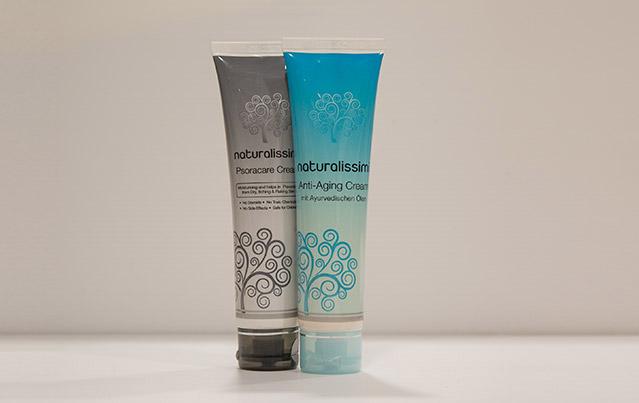Notifications

7 minutes, 58 seconds
-97 Views 0 Comments 0 Likes 0 Reviews

Cosmetics touch lives in quiet, meaningful ways—elevating confidence, soothing skin, and creating rituals of self-care. Yet, few understand how these thoughtful products come to life behind lab doors.
Each lotion, serum, or cream begins long before it reaches a shelf. The process of cosmetics formulation development is both science and care—a blend of chemistry, safety, and intention.
Let’s take a closer look inside the lab and explore how custom cosmetic formulas are created from scratch.
Every formulation journey begins with a vision.
Whether it’s a gentle face wash for sensitive skin or a hydrating hand cream, the first step involves understanding the purpose, target users, and desired feel of the product.
Formulators collaborate closely with brand developers to clarify the product’s identity and performance expectations.
Ingredient selection is the heart of cosmetics formulation development.
Scientists consider the product's function, skin compatibility, texture, and performance. They research actives, emulsifiers, emollients, and botanical extracts with purpose and precision.
The goal is to create a blend that is effective, safe, and gentle—especially for delicate areas like the eyes or sensitive skin types.
Great products don’t just work—they feel good to use.
Formulators carefully adjust the texture, absorption rate, and after-feel of each product. A night cream may need richness, while a daytime serum should feel light and breathable.
This balance between function and sensory experience is key to customer satisfaction and product success.
Once the base formulation is ready, it undergoes rigorous lab testing.
Stability tests determine how well a product holds up over time, under different temperatures, and in various packaging materials.
Safety assessments, including pH and microbial testing, ensure the product is suitable for repeated use and free from harmful bacteria.
Every formula must comply with cosmetic regulations.
Formulators track ingredient safety profiles, follow documentation protocols, and adhere to international compliance standards. This includes avoiding banned substances and ensuring accurate label claims.
This stage safeguards the health and trust of end users, particularly when products are intended for sensitive skin or near-eye application.
Custom cosmetics formulations are never one-size-fits-all.
Whether a product is intended for oily, dry, mature, or acne-prone skin, developers tailor each ingredient to suit specific needs.
Even fragrances and colorants are adjusted or removed to accommodate allergy-prone individuals or those with heightened skin sensitivity.
Today’s consumers seek transparency and environmental care.
Formulation labs increasingly prioritize clean ingredients, vegan alternatives, and biodegradable emulsifiers. They reduce reliance on synthetic preservatives and minimize water usage where possible.
Cosmetics formulation development now blends modern science with a deep respect for health and the planet.
Once the product is stable and compliant, small batches are created for evaluation.
These are used for patch testing, user trials, and texture refinement. Feedback from early users helps adjust fragrance, thickness, or absorbency for improved performance.
Formulators rely on this feedback loop to fine-tune their creations with empathy and precision.
The formula’s packaging isn’t chosen for beauty alone—it plays a protective role.
Labs test how the formula interacts with its container to ensure safety, longevity, and user experience. Certain ingredients can degrade or react in unstable packaging.
Every component must work together—from pump to product—to ensure a safe and enjoyable experience.
With final approval, the formulation is scaled from lab batch to commercial run.
This requires careful adjustment of mixing times, temperatures, and ingredient volumes without compromising quality. Even at high volumes, consistency must be maintained across every unit.
This step transforms a lab-tested vision into a ready-to-market reality.
Formulation work doesn’t end once the product launches.
Manufacturers perform ongoing quality checks to ensure consistency, batch integrity, and safety. They track customer feedback and refine formulas based on evolving research and regulations.
This long-term commitment ensures that each product maintains its trusted performance over time.
Custom formulation is a partnership between brand owners and manufacturers.
Transparent communication, shared values, and a commitment to quality make a difference in every outcome. The best manufacturers value the well-being of users as much as the science behind the formula.
For products used near the eyes or on sensitive skin, this caring approach becomes even more critical.
At its core, formulation development is about care.
Each ingredient is chosen not just for efficacy but for comfort and trust. The journey from concept to shelf is paved with careful choices, clean science, and attention to detail.
That’s what turns a formula into something that truly supports everyday wellness.
For brands seeking custom cosmetic products, choosing the right formulation partner is essential.
Look for manufacturers who prioritize transparency, sustainability, and user safety. Their expertise will not only shape the formula but also guide your brand toward long-term success.
The best formulations are born in labs where science meets compassion.
Custom cosmetics formulation development is a deeply thoughtful process. From the first ingredient to the final bottle, it reflects care, precision, and a desire to support healthier routines.
Among cosmetics product manufacturers, Clarion Cosmetics stands out for its commitment to quality, safety, and innovation. Their approach to custom formulation ensures that every product meets both scientific and emotional expectations.
